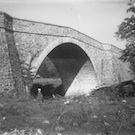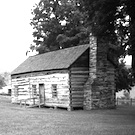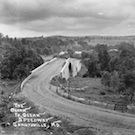Sediment and Dredging
Sedimentation is a consequence of erosion. Eliminating erosion, eliminates sedimentation. Once sediment is deposited it can move around due to wave action and currents. Movement of sedimentation can alter navigability.
How does one go about getting rid of the sediment?
Sedimentation cannot be eliminated because it is not possible to entirely eliminate erosion. One can only reduce erosion and hence sedimentation.
To minimize sedimentation one has to look at erosion and control it.
Identify the Sources of Erosion:
- Streams coming into the lake
- Shoreline Erosion
- Storm water conduits
- Surface Runoff
For each source one has to identify mitigation measures and opportunities.
Sedimentation must be tracked also:
- Identify Sedimentation Properties
- Monitor Sedimentation
- Identify Locations Where Sediment is Moving
- Monitor Sediment Movement
- Does Sediment Movement Alter SAV Growth?
Resources:
- Deep Creek Lake: A Sediment Study, WBCM, December 2013
- Cove Evaluation Report, Anchor QEA for MES, July 2017
- Dredging & Sediment Cost Review, Capitol Lake Improvement & Protection Association 'CLIPA' SaveCapitolLake.org
- Lake Dredging, Illinois Environmental Protection Agency, 1998.
- Deep Creek Lake Sediment Accumulation Study: A map reconnaissance of selected coves, Richard Ortt, Jr and Vince Manship, DNR, October 2011.
- Deep Creek Lake Sediment Study: Physical and Chemical Characteristics of Lake Sediments, Darlene V. Wells and Richard Ortt, Jr., DNR, October 2011.
- Deep Creek Lake Sediment Study: Physical and Chemical Characteristics of Lake Sediments, Richard Ortt, Jr, DNR, July 2011.
- Green Glade by Drone, FoDCL, July 5, 2017?
- Green Glade by Drone, July 5, 2017?
- Other related reports can be found on the document archives of the Deep Creek Watershed Management Plan work.











